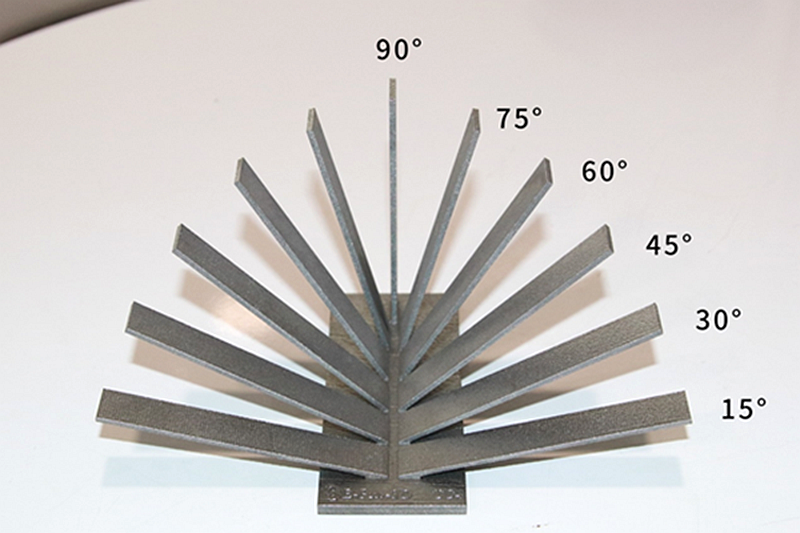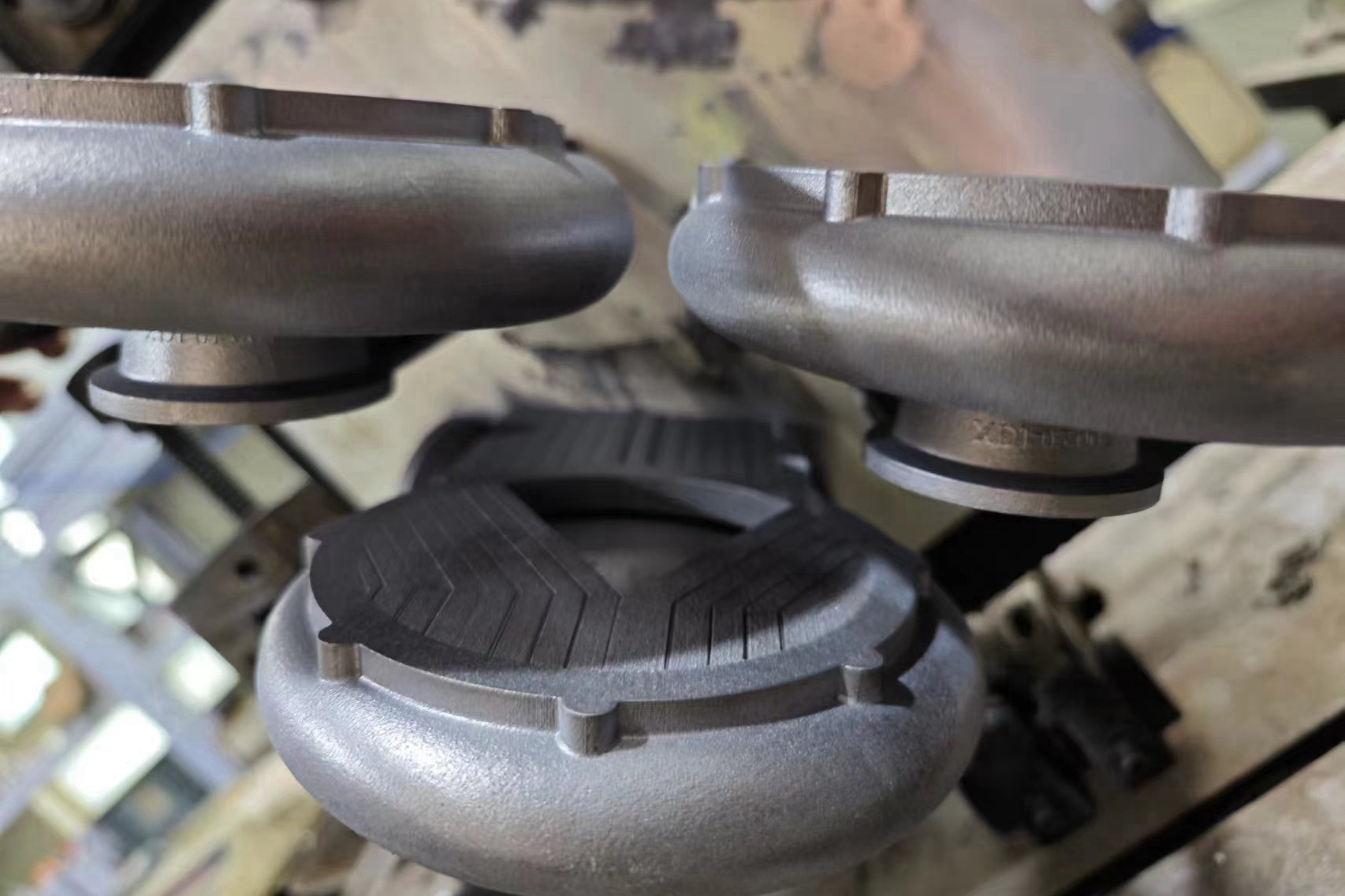WAAM (Wire and Arc Additive Manufacturing) Superalloy 3D Printing Service
As industries evolve and adapt to technological advancements, the demand for high-performance materials and manufacturing techniques has remained the same. One of the most exciting innovations in this space is Wire and Arc Additive Manufacturing (WAAM). This additive manufacturing process combines the flexibility of 3D printing with the power of arc welding to create complex, durable, and high-performance components, mainly using superalloys like Inconel, Hastelloy, and Titanium alloys.
WAAM enables the production of parts with excellent mechanical properties, high precision, and minimal material waste, making it an ideal choice for industries such as aerospace and aviation, automotive, power generation, and more. This blog will explore the WAAM process in detail, focusing on suitable materials, the manufacturing process, post-processing, testing, and its wide range of applications in critical industries.

Understanding the WAAM Process and Materials Used
Wire and Arc Additive Manufacturing uses wire-based feedstock material, often a superalloy, which is melted using an electric arc. This process allows the rapid deposition of material to build up parts layer by layer. The superalloy used in this process must be capable of withstanding extreme environments and high temperatures, making materials like Inconel, Hastelloy, and Titanium ideal candidates for WAAM applications.
The process also benefits from advanced post-processing methods like Hot Isostatic Pressing (HIP) and heat treatment, which help improve the material properties of the printed part, ensuring they meet industry-specific performance requirements.
Post-Processing in WAAM: Enhancing Material Properties
Once the component is fabricated, post-processing plays a crucial role in refining the part's microstructure and enhancing its mechanical properties. Heat treatment and superalloy welding can help eliminate residual stresses and improve strength, fatigue resistance, and overall performance.
Superalloy CNC machining may also be used to achieve precise geometries, improving the part's surface finish and dimensional accuracy. These post-processing steps ensure that WAAM components meet the high standards required for critical applications in aerospace, automotive, and energy production.
Testing and Quality Assurance in WAAM Production
To guarantee the reliability and performance of WAAM components, thorough testing is essential. Techniques like Coordinate Measuring Machine (CMM) checking, X-ray checking, and metallographic microscopy can be used to inspect the internal and external quality of the printed parts. These quality control methods ensure that parts are defect-free and meet stringent standards for high-performance applications.
Applications of WAAM in Critical Industries
WAAM technology has broad applications in industries that require high-performance materials, including aerospace, automotive, and power generation. WAAM produces lightweight and complex structural components in aerospace that can withstand extreme operating conditions. Similarly, in the automotive sector, it helps produce durable, high-strength parts while minimizing material waste.
By leveraging the unique benefits of superalloys, 3D printing, and advanced post-processing techniques, WAAM is revolutionizing the manufacturing of high-performance components for critical industries.
Understanding WAAM: Technology Overview
At its core, Wire and Arc Additive Manufacturing (WAAM) is an additive manufacturing process that uses a welding arc to melt and deposit material onto a substrate. Unlike traditional welding, whose goal is to fuse materials, WAAM aims to build parts layer by layer, similar to other 3D printing technologies. The process uses a wire feed that is melted by the arc and deposited onto the substrate to form the desired part. The advantage of WAAM lies in its ability to create large and complex geometries with high-strength materials, including superalloys, which can be further processed through techniques like Superalloy Precision Forging.
WAAM can use various welding techniques, such as Gas Metal Arc Welding (GMAW) or Tungsten Inert Gas (TIG) welding, to achieve different properties in the final part. The flexibility of WAAM makes it suitable for creating prototypes and end-use parts. It is especially advantageous in industries that require parts to withstand extreme heat, pressure, and corrosion, such as aerospace, automotive, and energy. In these industries, materials like Inconel alloys, often processed using Vacuum Investment Casting, are essential due to their resistance to high temperatures and oxidation.
One of the significant benefits of WAAM over traditional manufacturing methods like casting or machining is its ability to create near-net-shape components, reducing material waste and processing time. Unlike Superalloy Directional Casting, which involves intricate molds and precise cooling rates, WAAM's additive process allows for quick adjustments in material deposition, making it a more agile method for custom part production.
By combining WAAM with other advanced manufacturing processes, such as Superalloy Isothermal Forging, manufacturers can produce parts that meet stringent requirements for both mechanical strength and thermal stability. WAAM also integrates well with processes like Powder Metallurgy Turbine Discs, which is critical for applications where part performance is paramount under extreme conditions.
The WAAM Manufacturing Process
WAAM's manufacturing process can be broken down into a few simple but essential steps:
Material Selection and Preparation
Before the printing process begins, the correct superalloy material must be selected. It typically involves wire-based feedstock, in the case of WAAM. For Inconel, Hastelloy, or Titanium alloys, the wire is carefully chosen to meet the application's specific requirements. For instance, high-purity wire is often required to ensure the mechanical properties of the final part. In many cases, material testing and analysis can be used to evaluate the specific alloy composition and ensure it meets the desired criteria.
Build Process
Once the material is prepared, the arc is initiated, and the wire is fed into the molten pool, which forms a solid structure as it cools. The process is repeated layer by layer to build the component. The deposition rate can be adjusted, and the part geometry can be modified throughout the build process. This layer-by-layer construction allows for complex shapes, internal cooling channels, and reduced material waste, making it more efficient than traditional methods. Heat treatment may be applied after the build process to optimize the final part's mechanical properties and structure.
Post-Processing
Once the part is printed, several post-processing steps are typically required to achieve the necessary surface finish, dimensional accuracy, and mechanical strength. These steps may include hot isostatic pressing (HIP), which eliminates internal porosity and improves material integrity, or superalloy welding to enhance component durability and strength. Additionally, applying a thermal barrier coating (TBC) may provide added protection against heat damage for components that operate in extreme environments.
To ensure precise features, including internal cooling channels, deep hole drilling and electrical discharge machining (EDM) can be employed for accurate material removal and fine-tuning of the part geometry.
Testing and Quality Assurance
The quality of WAAM-produced parts must be rigorously tested to ensure they meet the high standards of industries like aerospace, defense, and energy. The following tests are commonly used:
X-ray Testing
X-ray Testing detects internal defects, such as voids or cracks, that may have occurred during printing. This non-destructive technique ensures that the parts are accessible from structural imperfections that could impact their performance.
Metallographic Microscopy
Metallographic Microscopy examines the material's microstructure, ensuring uniform grain distribution and identifying defects. This analysis is critical for understanding the material’s overall quality and confirming it meets the required standards.
Tensile Testing
Tensile Testing measures the material's strength and elasticity under stress. This test helps determine how the part will behave when subjected to different mechanical forces.
Scanning Electron Microscope (SEM) Testing
Scanning Electron Microscope (SEM) Testing analyzes the surface and microstructure in greater detail, ensuring the part's integrity. Through other inspection methods, SEM can detect surface imperfections that might not be visible.
Fatigue Testing
Both dynamic and static fatigue testing help assess how the material will perform under cyclic loading conditions. These tests simulate real-world stresses to ensure the part will not fail prematurely under operational conditions.
These tests ensure that the parts can withstand the harsh environments in which they will be used, such as jet engines or chemical reactors.
Industries and Applications
WAAM is particularly useful in industries requiring high-performance materials and complex geometries. Here are a few critical applications of WAAM for superalloy parts:
Aerospace
WAAM is used to manufacture turbine blades, engine components, and exhaust system parts that require high-temperature resistance and minimal weight. These applications are critical in the Aerospace and Aviation industry, where superalloy parts are essential for maintaining performance under extreme conditions. Additionally, superalloy exhaust system parts play a pivotal role in ensuring the durability and efficiency of exhaust systems in aerospace applications.
Power Generation
Heat exchanger parts, reactor vessel components, and other superalloy parts for turbines and pumps are commonly produced for the Power Generation sector. Reliable and high-performance materials are crucial in power plants, where parts must withstand high temperatures and corrosive environments.
Chemical Processing
WAAM creates components exposed to highly corrosive environments in the Chemical Processing Industry, such as reactors, pumps, and piping. The durability of superalloys like Hastelloy and Inconel makes them ideal for these applications, where material integrity is critical.
Defense and Military
WAAM technology has applications in Military and Defense, particularly for producing high-strength superalloy components used in armor systems, missile segments, and naval ship modules. These parts require exceptional mechanical properties to endure extreme stress and environmental conditions.
FAQs
What are the advantages of WAAM over traditional manufacturing methods?
Why are Inconel, Hastelloy, and Titanium alloys used in WAAM?
What types of post-processing are required for WAAM-produced parts?
How does WAAM impact the cost and production time for manufacturing high-performance parts?
What testing methods are used to ensure the quality and reliability of WAAM parts?



